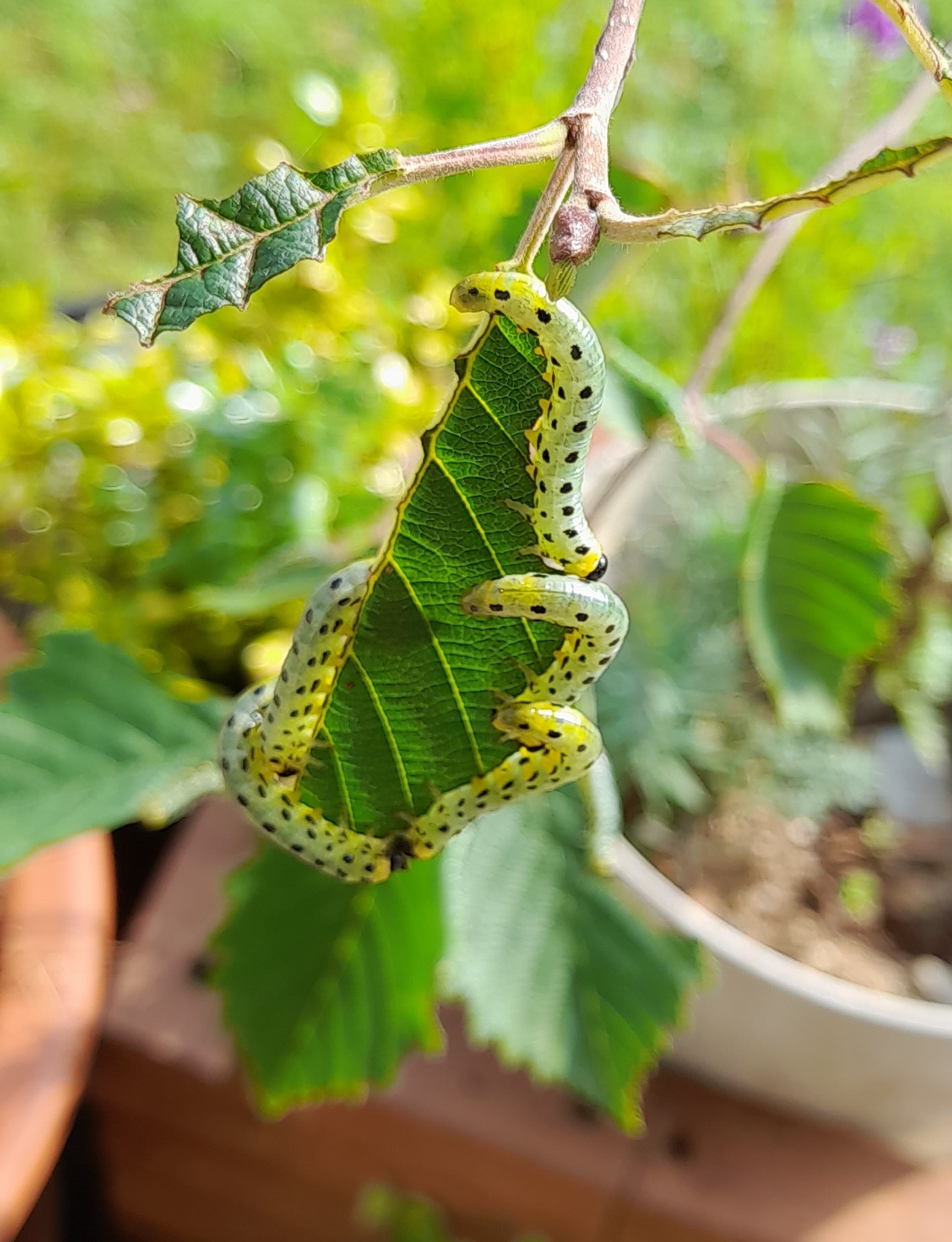Technically not in the watermeadow, they were on an alder sapling in the top garden, these are the larvae of a Birch Sawfly (Craesus septentrionalis).
These larvae suddenly seemed to appear during the afternoon on the patio. Birch fly larvae feed in crowds on young trees, stripping the leaves of mainly alders and birches from late August to October. They have four rows of around ten black spots running down the length of their body and three pairs of legs followed by rows of false legs, which you can see in the photo.
There was conflicting information online – a different species of Birch Sawfly (Cimbex femoratus) had a plump green larva with a dark stripe running down its back, while Craesus septentrionalis is also known as Nematus septentrionalis, which itself is also known as the Hazel Sawfly. I also read that Nematus septentrionalis was formerly known as Craesus septentrionalis. It all seems a bit ‘mix and match’.
Unlike caterpillars, which only really eat single plant species, the sawfly larvae enjoy a varied diet of maple, hornbeam, hazel, ash, poplar, willow, rowan, alder, and birch. The larvae will pupate and then emerge as small, black adult Birch Sawflies.
UPDATE – From now till 10 March 2024, I’m going to post three times a week only. This is because there will be limited access to the watermeadow and also, I’m not expecting to see as many new species. I should still hit my target as I have been posting more than one species on many days so far. This will give a more accurate representation of the year than if I had relied on a backlog of summer observations to pad out the wintery days.
